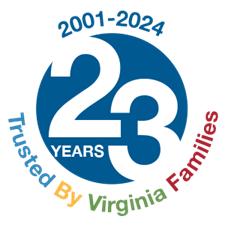New research finds that 3 out of 4 workers have regular caregiving responsibilities
The rising costs of health care, changing demographics and increasing demand for employees to juggle work and care is creating a caregiving crisis in the U.S. workforce, according to a new report. Many employers aren't aware that the issue is reducing productivity and adding millions of dollars in hidden costs to a company's bottom line due to absenteeism and job turnover.
According to the Caring Company study, which surveyed 1,500 employees and 300 human resources leaders to better understand the increasing importance of caregiving benefits, 32 percent of employees have left a job to take care of an older family member with daily living needs. And almost 25 percent of workers have quit work to take care of an ill or disabled spouse, partner or extended family member.
The demands of caregiving affect everyone from CEOs to lower-level staffers, says Manjari Raman, senior researcher and coauthor of the study with Joseph B. Fuller, a Harvard Business School professor and cochair of the school's Managing the Future of Work initiative. Yet “only 28 percent of employees were even willing to admit that this impacted their career,” Raman says. “The culture and the norms about talking about caregiving responsibilities are so deeply set.”
The study also found a disconnect between how employers and employees view how caregiving affects job performance. While more than three-quarters of those surveyed admitted that their work suffered due to their added caregiving duties, only 24 percent of employers said it affected productivity. However, many also noted that the resulting absences and time off hurt workers’ careers.
The report recommends that employers take a hard look at their caregiving benefits and work culture to see if they are meeting employees’ needs — and if they're not, to look at innovative solutions to bridge the gap.
“The last outcome we want from this report is for a company to say maybe we should do this sexy thing or that sexy thing to make our care benefit package more current,” Raman says. “Companies have to look at this as a major strategic issue — you have to rethink how you hire, what talent you have” and if the organization is set up to support employees returning from caregiving or maternity leave so they can get back on the career track, she says. “This is just as meaningful for men who want to take time off to spend time with their children” or need time to care for an ill parent.
"I think we will move to a future state where companies pay more attention to care. I see this with a lot of optimism,” Raman adds.
---------- Written by Nancy Kerr, AARP, January 16, 2019
AARP was founded in 1958 and has over 38 million members. It is a nonprofit, nonpartisan organization for people over the age of 50. AARP is well-known for its advocacy efforts, providing its members with important information, products and services that enhance quality of life as they age. They also promote community service and keep members and the public informed on issues relating to the over 50 age group.
